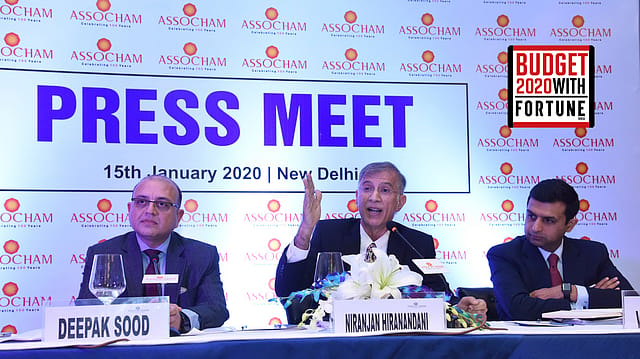Budget 2020: ASSOCHAM seeks 25% GST cut, debt rollover
ADVERTISEMENT

Associated Chambers of Commerce and Industry (ASSOCHAM) said it wants the government to reduce the Goods and Services Tax (GST) rate across all slabs by 25% in the Union Budget 2020 to encourage more businesses to pay tax, and expand the tax base. The trade body also suggested converting big shadow banks into banks so that they could expand their lending base, a one-time debt rollover for financial institutions to deal with the liquidity crisis, and sustained public investment on infrastructure in order to spur demand.
“We think there should be a GST cut of 25% in the next six months, logically and correctly it will mean an additional deficit of ₹1,20,000 crore,” said ASSOCHAM president Niranjan Hiranandani in New Delhi on Wednesday.
The trade body, which represents about 4.5 lakh small and medium businesses (SMBs) directly or indirectly, released a 13-point document, which outlines the expectations of corporate India from Budget 2020. These demands include: faster allotment of land to boost ease of doing business; extension of reduction in income tax rates for corporate entities to all micro, small and medium enterprises; import of substituting products (which attract new investments for manufacturing in India) to be kept outside the ambit of free trade agreement, and addressing the liquidity crunch in the country on a war footing. The association also said the government needs to impose measures to boost demand and consumption, which has taken a big hit in the last year.
“Fiscal incentives and sustained public investment on infrastructure will lead to a spur in demand and will be a big catalyst for reviving the growth momentum in the economy,” the trade body said.
The first full budget of the Modi 2.0 government, which will be presented by finance minister Nirmala Sitharaman on February 1, is an important one for the economy reeling under a slowdown for more than a year now. The capital goods sector registered negative growth in the March, June, and September quarters of FY20. Passenger car sales fell 8.4% in December. Meanwhile, a liquidity crunch caused by the fall of IL&FS has only worsened the situation. Last week, the National Statistical Office (NSO) pegged India real GDP growth for FY20 at 5% as compared to 6.8% in FY19.
December 2025
The annual Fortune 500 India list, the definitive compendium of corporate performance, is out. This year, the cumulative revenue of the Fortune 500 India companies has breached $2 trillion for the first time. Plus, find out which are the Best B-schools in India.
“If you want to reach the target of a $5 trillion economy, you have to have double-digit growth in GDP, you cannot have a 5% GDP growth and a $5 trillion economy,” Hiranandani said.
Assocham suggested that in order to address the liquidity crisis, the government can consider converting big NBFCs into banks: “They will be able to serve their target clientele (MSMEs, informal sector etc); and promote ‘nationalist banks’ with initial ownership of even 100% to be reduced gradually to 26% over a given period of time.” It also suggested revisiting Section 29A of the Insolvency & Bankruptcy Code (IBC) which prevents promoters from bidding for their stressed company.
The trade body also suggested steps to ease the distressed telecom sector. In October last year, the Supreme Court had upheld the Department of Telecom (DoT)’s interpretation of AGR or adjusted gross revenue. Big telecom players would have to pay about ₹1.4 lakh crore to the government.
“It is absolutely imperative to address the AGR issue to ensure continuity of business, investment in the sector and to meet the vision of Digital India; TRAI has already recommended reduction of Universal service levy by 2%—this recommendation may kindly be accepted and implemented. Balance licence fee may be brought down to 1%,” it said.
ASSOCHAM also recommended that steps should be initiated to review the definition of AGR prospectively, customs duty be brought down to nil, or at least, the hike from 10% to 20% be rolled back.
The association said that the agriculture sector also needs a boost and it can be done by improving farmers’ income by exempting leasing services for farm equipment and machinery from GST and provision of income tax.
“The corporate sector should be allowed to enter into contract farming in a very big way so that productivity becomes three times and farmer incomes double,” Hiranandani said.
